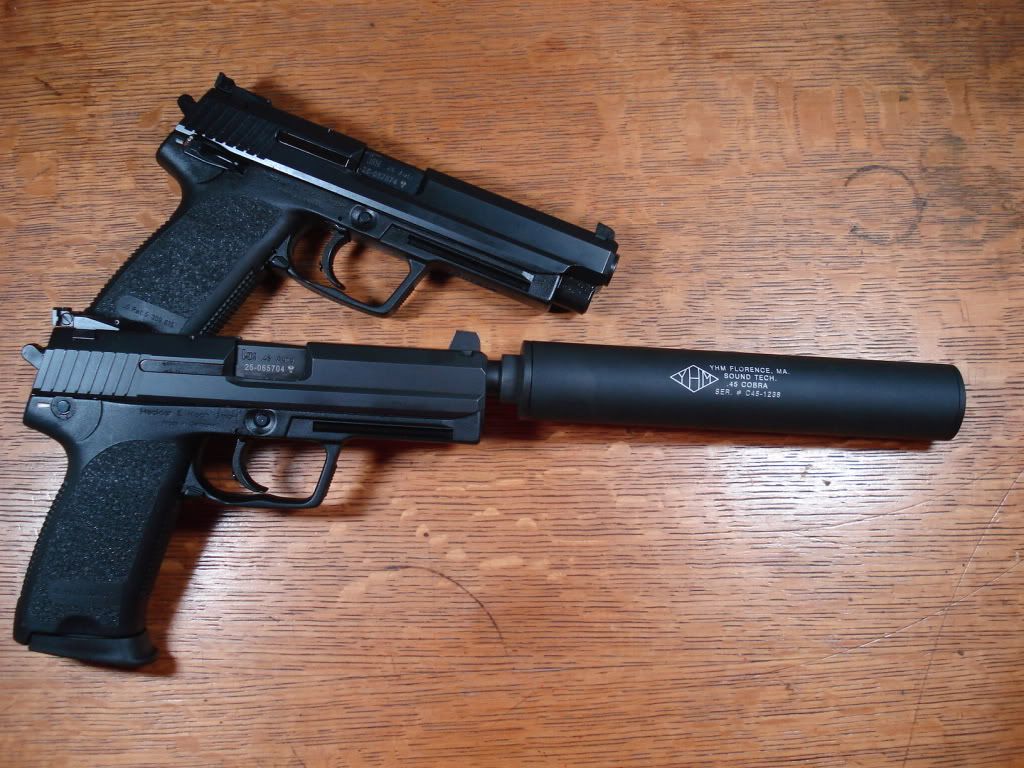Re: Dry vs. Wet Pistol Suppressor
9mm Wet and dry cans...there can be differences. Yes, some designs are made to be run wet from their inception. No, when properly loaded, from the right end, with the right ablative, from the right tool, in the right amount, with the right twist out, they are not dirty, do not spit back and are as clean on the host and the shooter as a dry can. I have wet cans, specifically designed to be wet that are quiet, clean and easy on the host. Nothing, repeat NOTHING is as quiet as a wet pistol can. Even the best dry can can be made more quiet wet.
The issue is as others have said, volume of fire. Need a can that is really small? Say 9mm can that fits in your pocket? Not going to dumping more than a clip? Need as quiet as possible? Wet and filthy. Any can is quieter filthy, whether or not its an ablative or pure crap, up to a point, even dry cans are quieter wet.
- Water cools best, creates good turbulence but last the shortest of all, perhaps as few as three 9mm rounds in some designs. Watch out, some hosts will be badly corroded with the use of water in the can. Barrels, gas systems can both be adversely effected by the resulting steam out in some hosts.
- Light oils (Rem Oil, etc.) work well, is easy to apply and will last for perhaps 6-8 9mm rounds. Same for Wire Gel (use clear gel). After that things get louder fast.
- Heavy grease works well, lasts the longest and will require less and less loading over time. Perhaps as many as 18 9mm rounds with superb suppression.
Most folks just don't know:
1. Load the can from the blast baffle side and pull the grease out the rear end of the can, not the muzzle end. Yes, this requires taking the can off the host. If you want maximum quiet, that is the process. The forward chambers are not to be loaded and will capture the heavier ablatives.
2. Use a loading tool specifically designed for heavy ablatives. And use the right amount! Most 9mm cans use 10 cc of lithium like products. Again draw it backwards (requiring taking your can off) and twist your applicator to lay material in.
3. Use a straw tube to load light oils. Stick the straw in from the rear of the can and again load it pulling back quickly. Light oils, gels blow right out. The idea is not big material loads here, the idea is to improve on water running out your holster. Not really going to work past a point and spray or dumping large amount of oil or gel is a waste. Less important to avoid loading the forward chambers.
4. Leave the can on and dip 2/3 of the can if using water and shake. Shake it with the barrel still down. Try not to lift the muzzle up until the vast majority of water is out.
Wet cans are meant to achieve the absolute quietest operation. Whatever process is required to get it right for 8 rounds is meaningless to those that require that level of suppression. Planning on standing at the range and banging away all day? Go dry, go big volume and expect louder readings.
Wet or dry...never clean your can. If your shooting rim fire its a whole different set of issues.
We are talking pistol cans and pistol cartridges here, not center fire rifle cans.
Here are a couple to view...
http://www.xtranormal.com/watch/8176267/suppressor-basics
http://www.xtranormal.com/watch/8193125/should-i-clean-my-centerfire-suppressor
On the can below, you can swap out the end to accept a stationary interface (no Neilson) allowing for use on non reciprocating barrel. Their new 9mm T.H.O.R. is now available as well, called Triad.





